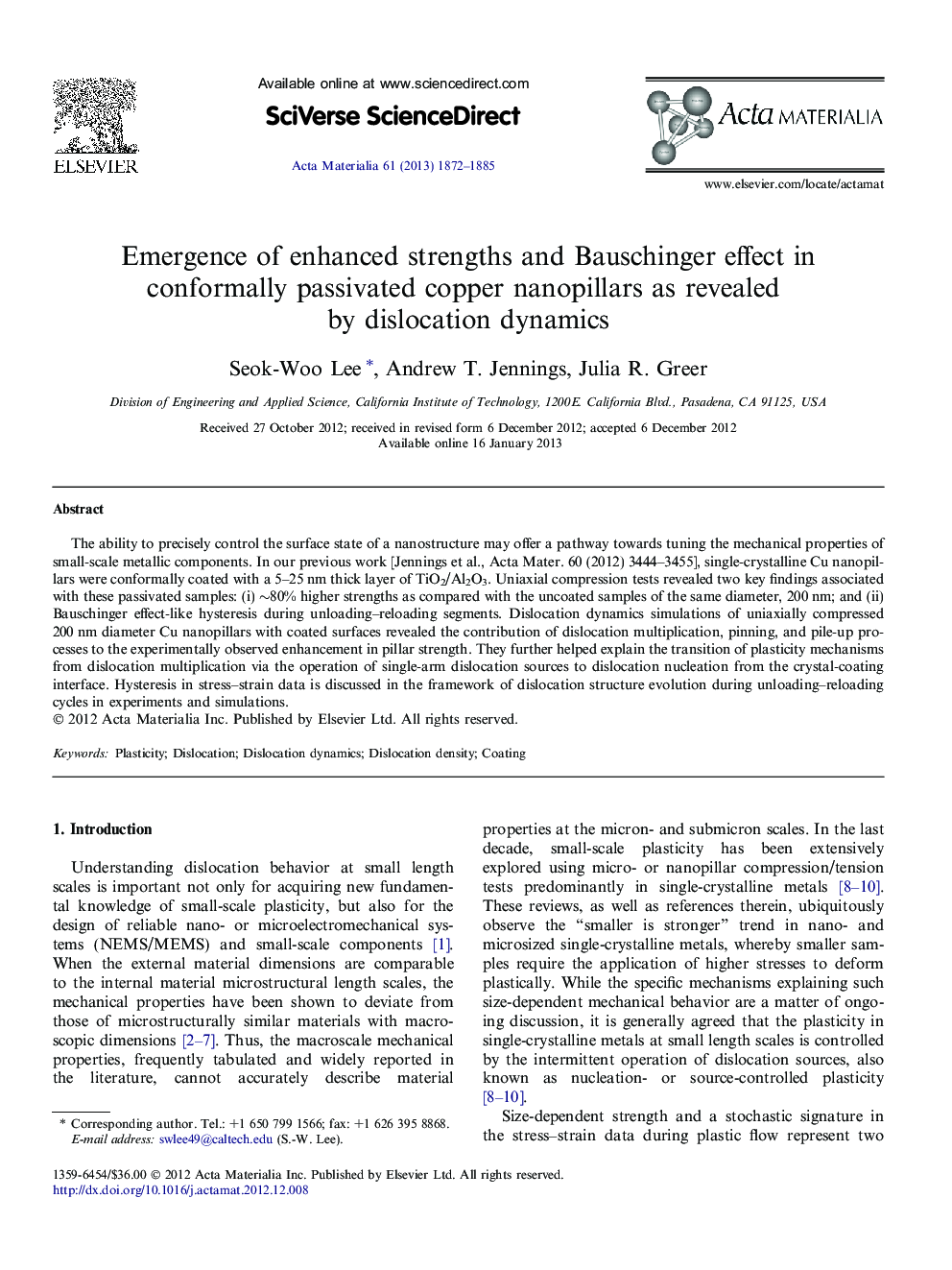| Article ID | Journal | Published Year | Pages | File Type |
|---|---|---|---|---|
| 1446291 | Acta Materialia | 2013 | 14 Pages |
The ability to precisely control the surface state of a nanostructure may offer a pathway towards tuning the mechanical properties of small-scale metallic components. In our previous work [Jennings et al., Acta Mater. 60 (2012) 3444–3455], single-crystalline Cu nanopillars were conformally coated with a 5–25 nm thick layer of TiO2/Al2O3. Uniaxial compression tests revealed two key findings associated with these passivated samples: (i) ∼80% higher strengths as compared with the uncoated samples of the same diameter, 200 nm; and (ii) Bauschinger effect-like hysteresis during unloading–reloading segments. Dislocation dynamics simulations of uniaxially compressed 200 nm diameter Cu nanopillars with coated surfaces revealed the contribution of dislocation multiplication, pinning, and pile-up processes to the experimentally observed enhancement in pillar strength. They further helped explain the transition of plasticity mechanisms from dislocation multiplication via the operation of single-arm dislocation sources to dislocation nucleation from the crystal-coating interface. Hysteresis in stress–strain data is discussed in the framework of dislocation structure evolution during unloading–reloading cycles in experiments and simulations.
